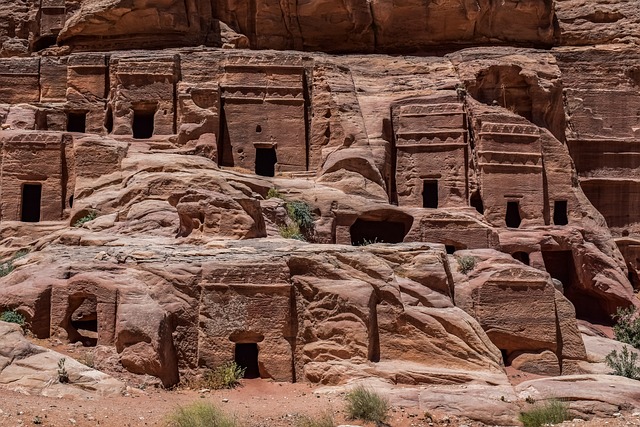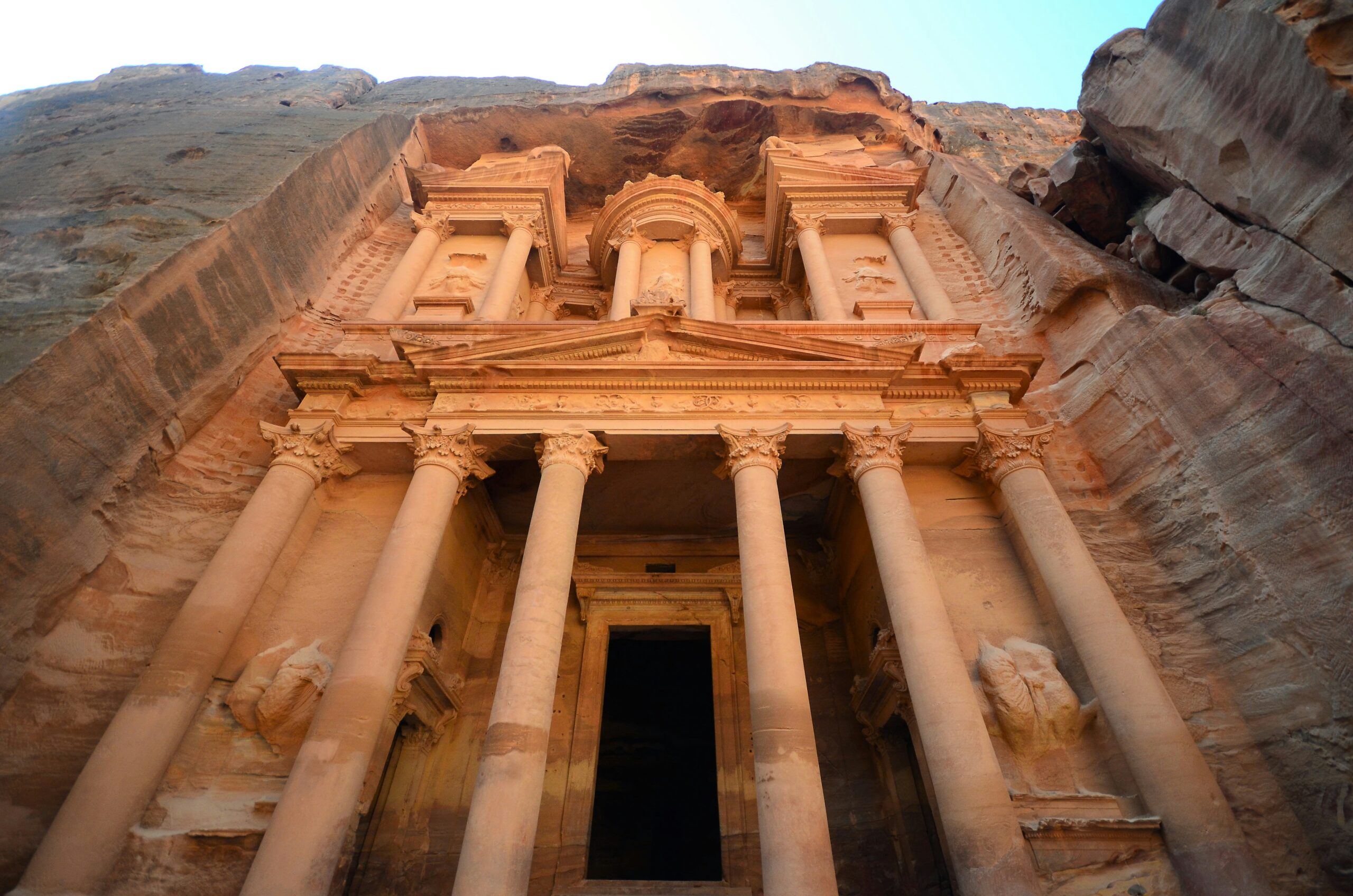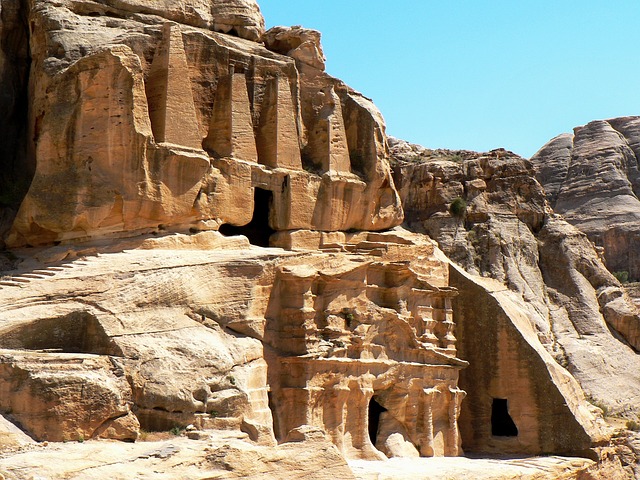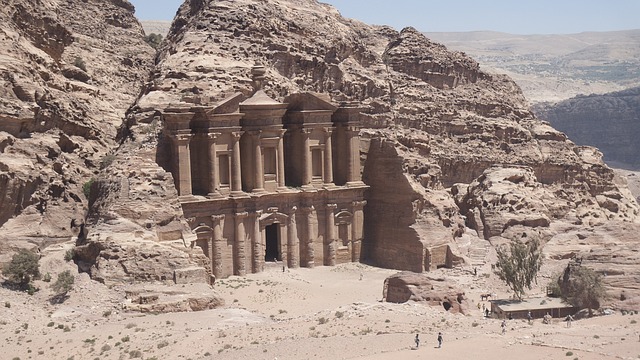Introduction to the Petra Kingdom
Petra Kingdom is also referred as Nabataean Kingdom is a evidence of an ancient civilization that resides in southern part of Jordan. According to the geographical location of Petra that is situated in combination with desert canyons and mountainous regions, the geographical setting of the site contributed significantly to its history. This positioning of the city made it possible for it to become a busy commercial center especially when it was able to enjoy good economic returns during its golden period of growth. Petra was a wealthy city in which caravans filled with lucrative products such as spices, silk, and incense would gather, thus resulting in incessant exchange of goods, cultures, and beliefs.
The art of the world got to know about the existence of the magnificent city of Petra in the nineteenth century when the Swiss explorer Johann Ludwig Burckhardt re-explored it. These accounts again laid the focus on the ancient city which otherwise was unknown to the Western world for centuries. His discovery which was like finding a new world generated a lot of explorations and academic studies to date.
In appreciation of its immense value in supporting humanities’ contribution to cultural values, Petra has been declared a world heritage at site in 1985. This status goes along with the role played by this structure as an architectural and archeological wonder with such manifestations as the intricate works of the Nabataean masters in terms of rock- cut architecture and water supply systems that grossly elucidate the genius of these ancients.
Part of Petra’s influence goes back in time and has its imprint in history and culture, but it is not limited to this realm. The mysterious city has been featured in many movies and books, the most famous of them is, certainly, Indiana Jones and the Last Crusade whose image of the Treasury, Al-Khazen, amazed people all around the world. Pratt has pointed that such depictions have reinforced Petra as an enduring paradigm of mysterious and exotic antiquity, and other forms of representation seem few and far between.
The Nabataeans: Builders of Petra
It was the Nabataeans, which was a nomadic tribe that rose to become the constructors of Petra and achieving the conversion of this city into an architecture masterpiece. They have roots that go to the Arabian Peninsula before they moved to what is today Jordan area. That is why the social structure that was peculiar to the Nabataeans allowed them to create such kind of civilization that was able to construct buildings that could not be constructed in the kingdoms and empires of that time.
The primary was that they were located in the middle of most important Arabian trade routes that linked them with some of the biggest global civilizations including the Egyptian, Greeks, Romans and Persian. This synergy in trade made Petra to develop into a commercial center. The Nabataeans specialized in the sale of spices, incense, textiles, and other useful products; it became their source of economic prosperity; it also provided cultural and technology exchanges among people. Their cosmopolitan interactions are evident in Petra ‘s architecture specifically represent Hellenistic Egyptian, and Mesopotamian influence.
However, the Nabataeans’ engineering ability is best seen through the field of hydrology or water control. Living in the middle of an extremely dry desert, they developed elaborate means of acquiring, stowing and dispensing of water. Besides, they managed to construct elaborate system of dams, cisterns as well as aqueducts that helped them a lot in collecting rainwater which was scarce and distributing them round the city. These hydraulic achievements were significant in sustaining Petra’s inhabitants and the proto-urban and Agri-/commercial developments of the area.
Also, Petra is a home to the Nabataeans great architectural work that has been engraved and constructed on the face of the rocks. Buildings such as Treasury (Al-Khazanah and the Monastery (Ad-Deir)) are hewn out of sandstone cliffs and thereby serve as display of not only beauty but also craftsmanship in the usage of stone. Some of these structures have endured through the centuries which tells us about the great architectural skills of the Nabataeans.
Thus, with their talents and tactics the Nabataeans were able to create a great empire in the middle of the desert, which in fact seemed to be a great wasteland. Their achievement in trade, engineering and in architectural civil construction is still vivid testimony of these people’s ingenuity and industriousness.
Architectural Marvels of Petra
Famous for the beautiful carvings done on the rock, Petra is evidence of the architectural genius of the Nabataeans. Some of the stare attractions include the Treasury which is also refer to as Al-Khazanah. This astonishing outer face cut out of a great rose-red sandstone cliff, made up of both Hellenistic and Oriental architectural motives. Also known as the Treasury, Al-Khazanah, the building measures about 40 meters in height and is not clear whether this structure was a mausoleum or a temple.
Another phenomenal attraction found in Petra is the Monastery or Ad-Deir which is built on a mountain of steep steps and tracks. The exterior of the Church that remains as a major part of the Monastery impresses with its giant size – it is more than 50 meters wide and 45 meters high, and its decoration is much more modest in comparison with the richness of the ornament of the Treasury although it is still grandiose. The size of the building indicate that it could have been a worship place, where large groups of people could convene or perhaps for religious ceremonials. The landscape that one gets to see on the way to the Monastery includes valleys which are quite breathtaking, and this enhances the fantastical feeling of the Monastery site.
To add on, the Royal Tombs are another magnificent structure that can be viewed in the ancient city. These are some of the greatest tombs that are magnificently fixed at the mount of Jebel al-Khutbahs and they form this cluster. Among those, the most noteworthy is the Urn Tomb, which features an extended terrace as well as the columns of the Romans’ style. Near to it, we have the Silk Tomb owing its name to the sandstone carving that resemble a texture of the fabric used in the making of silks. It is for this reason that tombs provide a good understanding of the Nabataeans in term of art and engineering.
The techniques that the Nabataeans used in building such structures were very advanced to an extent of using dams to control water. With rudimentary equipment’s they carved out frontages and rooms out of the solid mass of sandstone. The accuracy of their work can be seen in the fine intricacies in the ornament and the architecture of the building as well as in the quality of the stone carving which shows the artists’ knowledge of the appropriate technologies. In this they rank as one of the greatest builders in that they had ability to sculpt nature into grand architectural pieces.
Al Manjar speculates that Petra one of the most astounding archaeological discoveries gives profound understanding of the religious and cultural dimension of the Nabataean culture. Petra was the center of the Nabataean kingdom and like many other cultures and nations the Nabataeans worshiped a diverse array of gods. Dushara was one of the primary gods which was sometimes considered as the chief god of the pantheon. The male deity was considered not only guardian or helper, but also strength and life-giving force. Another idol in their pantheon was Al-Uzza, which sovrans Venus and the stars. Influence that Al-Uzza had was immense, she represented love, war and the evening star.
However, it was rather interesting to state that the religious beliefs and activities of the Nabataeans were not very confined within the boundary of their localization and peculiarities. For this reason, Petra, being located at this strategic position acting as a center of several civilizations, received a blend of several cultures and religion. Incorporation of other neighboring cultures into the Nabataean culture especially in terms of spirituality was a strength amongst the Nabataeans. Several monuments which include temples and tombs shed light to a mix of Arabian, Egyptian, Hellenistic and Roman styling in architecture and graphics. The embracing of external stimuli by the Nabataean society did not only go as far as the religion but encompassed their art, language, and way of life, and thus leaving an imprint which made it unique.
Consequently, Petra’s proven location was complementary to its function as one of the leading trade and cultural hubs. It was a great carrier that many trade ways gathered here and it became a place where many people and thoughts collided. Prominent traders, travelers, and settlers which flocked to Petra came from different regions of the ancient world, thus making Petra a diverse city. This process was continued in order to enrich Nabataeans even more with different traditions integrating them into a single and colorful society. Still, these and other ideas absorbed from the external environment never transformed Petra into a copy of another culture, which can attest to the innovative and determined nature of the Nabataeans.
The Rise and Fall of Petra
The ancient city of Petra well-known for its carvings in the rock and the water transportation system was established for trading activities in the beginning of the early first century AD. This was because it was situated on several trade routes whereby it connected the Silk and Spice roads between Africa and Arabia to other cultures in Levant Egypt and the Mediterranean. In the socio-economic aspect, it reflects that Petra’s prosperity was significantly boosted by the trade since merchants and caravans visited the city thus require enhancement of infrastructures to accommodate the exchange of a diversified product.
But Petra’s peak was not going to be permanent as many would expect. This was however changed when in 106 AD the Nabataean Kingdom was incorporated into the Roman Empire. This political change was bound to alter Petra’s independence which it enjoyed for the most part, while its economic power started to diminish. Although the Romans continued to uphold Petra as a highly significant trading city, their concentration on administration as well as enhancement of infrastructures altered the flow of the commercial activities to other cities within the empire. The change and shifting of the networks of trade had a great impact of lowering the importance and business of Petra.
Another factor that negatively impacted on Petra’s fortunes was a series of natural disasters particularly earthquakes experienced in the region. Most of the constructions like building and façade are highly destroyed or wrecked, making it very difficult for this city to be reconstructed to the kind of glory it was before the onset of this disaster. Among those the catastrophic earthquake of 363AD was decisive and damaged many essential parts of the city becoming the reason of its decline.
However, Petra stands in the history as a city that survived to the later historical periods hence functioning a place in history. It went on preserving its Nabataean roots together with the influence of subsequent Byzantine and initial Islamic introductions in the area. In architectural and archaeological terms, Petra’s survival has revealed historical and cultural values, justifying it a place for UNESCO World Heritage Site in 1985.
Rediscovery and Archaeological Excavations
Even one of the most impressive and magnificent cities that have ever been established was wholly unknown to the western world until the first decades of the nineteenth century – Petra is situated in modern Jordan. It received world renown through the efforts of Swiss explorer Johann Ludwig Burckhardt. Burchardt dressed as an Arab in 1812; he moved through the Siq, a very narrow piece of land, and came across the Treasury, which made him realize the importance of archeological discoveries of Petra. He gave an account that sparked interest and curiosity into this so called “Lost City,” which stimulated more discovery and learning.
After Burckhardt’s discovery there was a significant interest in exploring and studying the site of Petra and people gathered together to conduct concentrations of archaeological digs. The first journeys proved to be complicated primarily due to the layout of the site as well as strict recording of the route. Of the early archaeological projects, one of the most significant was the work performed by the Palestine Exploration Fund at the end of the nineteenth and at the beginning of the twentieth century that imposed the foundation for the understanding of Petra’s architectural and cultural design.
Current research and excavations being conducted at Petra have come a long way in providing insight into this archaeological wonder which includes the source of the name Petra, people inhabiting this region and ways in which they might have lived. A great amount of information has been discovered by archeologists concerning the Nabatean Kingdom that inhabited Petra during the period of 4th century BC-4th century AD, when they succumbed to Roman’s rule. Some of the significant discoveries include complex systems of water supply, use of space and construction with large necropolises and beautifully painted and ornamented tombs that clearly demonstrate the architectural engineering and artistic accomplishment of the Nabataeans.
Archaeological and excavation work ongoing as the new layers of Petra’s history keep on coming to the surface. These are the Petra North Ridge Project, which focuses on analyzing Mezquita’s living and meeting areas; and Petra Garden and Pool Complex, exploring leisure/ritualistic activity of the higher strata of society. In order to decrease the negative influences of natural and anthropogenic degradation, it is necessary to carry out preservation activities, which are being practiced by organizations, for example the Petra Archaeological Park. They keep Petra relevant for the community of historians and students of other related fields in the society.
From the past explorations to modern survey methods, hence the rediscovery of Petra has not only revealed information about the city but its relevance and importance in the present time has also been identified through archaeological research. Petres commitment to deciphering the lost city’s mysteries guarantees that there is a lot more to be learned about ancient societies and how they influenced contemporary culture.
Petra Today: Tourism and Preservation
Currently, Petra is one of the greatest monuments built by the Nabataeans who’s architectural and engineering skills millions of international tourists. This indeed is one of the few known archaeological landmarks worldwide which has been recognized as a UNESCO world Heritage site. Visitors are given a sense of how life existed in this historic city through Petra’s Rock-Cut Architecture and the site has become a major income earner for Jordan’s economy. Tourism has great significance for local population as it generates income and creates job chances for the people.
But at the same time tourism is a thorny issue for the rejuvenated heritage of Petra as it poses many difficulties for the preservation of its unique values. Due to this many feet repeatedly stepping on structures that in many instances are thousands of years old, the structures have been damaged. To further some of these impacts, man interferences bring about weathering and erosion among other situations. The Jordanian government like other international organizations has embarked on implementing several measures that would reduce such effects. Other measures such as site management programs, awareness campaigns to visitors, as well as using modern technologies in preservation are among the strategies that are utilized to protect this historical site.
The Jordanian government involves other partners like, UNESCO and the World Monuments Fund in financing the conservation process. These programs are meant to conserve the historic structures with a view of making the necessary reparations to bring them back to their original status and make the public appreciate the need for heritage protection. Some of the strategies that are being practiced in the site include use of digital mapping and nondestructive techniques in the tracking and conservation of these relics.
Tourism practices and measures taken towards the protection of archaeological sites can also be practiced by the visitors to Petra. Petra keeps and recommendations for the visitors are not trespassing on the pathway which in fact keeps the tourists off the walls and not to touch any of the structures no matter how long they have been carved. Some of the highlights of Petra include the Al-Khazne, also referred to as the Treasury, the Ad-Deir or the Monastery and the sir referred to as the Street of Facades. Petra contains several sites and each one of them provides an insight into the Nabataean culture hence the need to keep this wonder for the generations to come.
Thus, when we proceed into the further studies of Petra, the main concern that has to be addressed remains the fine line between the tourist attraction and the natural preservation of the heritage site. Therefore, when visiting Petra, one has to practice proper conduct while exploring the site with an aim of making the beauty of Petra last as long as possible so that its history can be told to future generations.

Conclusion: The Enduring Legacy of Petra
That’s why the sight of the ancient city of Petra, also called the “Rose City,” opens up before eyes as a shining example of the great work of the Nabataeans in the sphere of architecture. This great civilization which boasted of these achievements, civilized a desert area to a city that was an important hub in trade and interaction between the ancient civilizations. Thanks to the water technicians’ skills the Nabataeans channeled water sources which in this case helped to create a desert oasis and support agriculture and the population of the mentioned city.
The Great Temple or the Treasury and the Monastery are the two major remains of architecture which represent the glory and the art of the city of Petra. These have been gouged out of the rose-red sandstone matrices and present a harmonious balance of the borrowed Hellenistic features with locally invented imagination that gives a sneak preview of the multiculturalism that dominated this trade point.
Some of the features found within this region include, Egyptian, Greek, Roman and Arabian civilizations that have occupied the region of Petra. That it played the part of a commercial and cultural hub lends to the general prospect of world history a lot of meaning. The city’s avenues covered with colonnades, theatres and tombs are a testimony of monumental scale how the Nabataeans affected immensely the world of Antiquity.
Thus, in today’s environment it is very critical to study and promote note taking on ancient civilizations like Petra. Petra became the UNESCO World Heritage site and therefore draws scholars or archaeologists as well as captivates millions of visitors every year. Maintenance and preservation of culture is important in the development of interaction for cultural heritage all over the world.
Petra can be appreciated as the piece of the world’s history that shows how active and powerful ancient people were to create such unique and marvelous city. Therefore, it becomes the mission of historians to investigate the past and save relics which would serve as a source of input in terms of the present and continue to provide a link to these marvelous creations for people in future.



